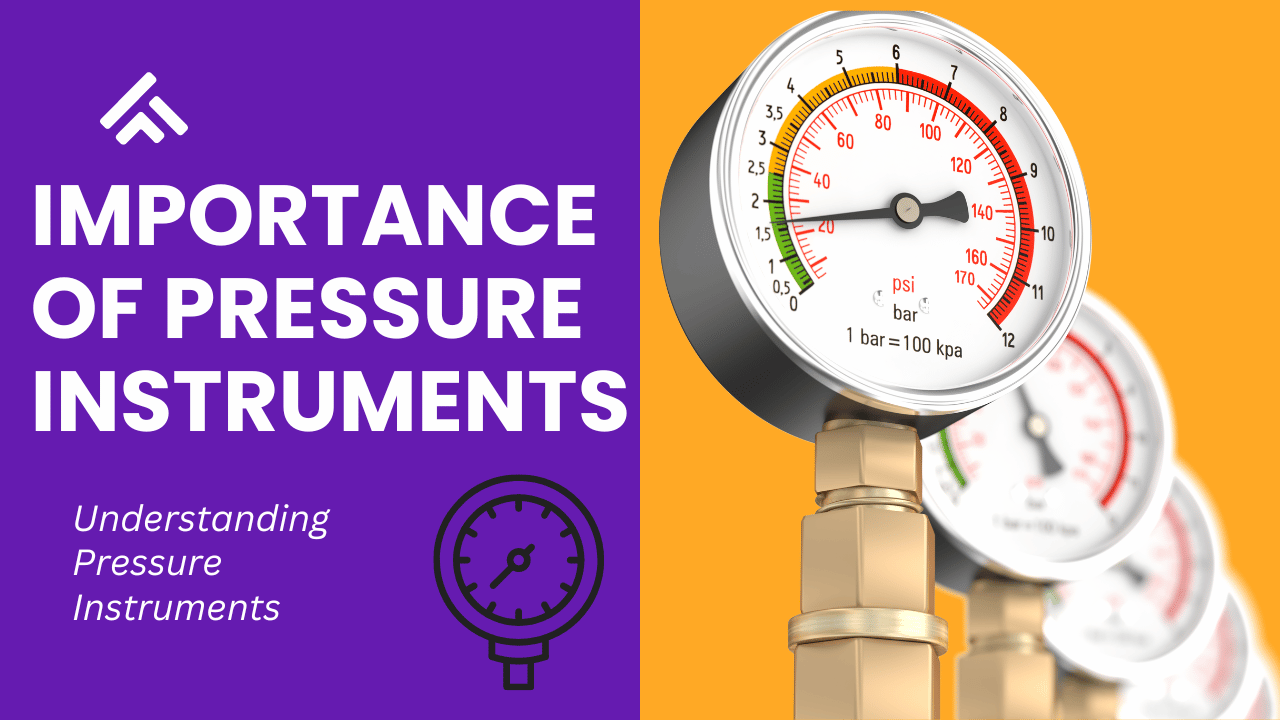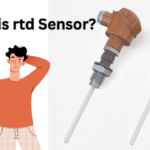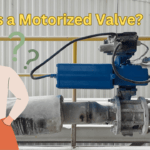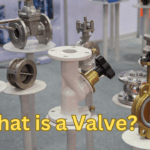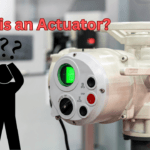Introduction
In the intricate realm of engineering and industrial processes, precision and control reign supreme. Among the myriad parameters that engineers and technicians monitor and manage, pressure stands as one of the most crucial. Pressure instruments, with their diverse range of applications and evolving technologies, play a pivotal role in ensuring safety, efficiency, and accuracy across various industries. This article delves into the evolution, types, and significance of pressure instruments in modern engineering.
Understanding Pressure Instruments
Pressure instruments, as the name suggests, are devices designed to measure and monitor the force per unit area exerted by a fluid or gas. This force, commonly referred to as pressure, can be measured in a variety of units such as pascals (Pa), pounds per square inch (psi), or bar. These instruments convert the mechanical force into an electrical signal that can be interpreted and used for various purposes.
Measuring Units of Pressure in Pressure Instruments
Here, we’ll explore some common measuring units of pressure and how they are utilized in pressure instruments:
Pascals (Pa): Named after the French mathematician Blaise Pascal, the pascal (Pa) is the SI unit of pressure. One pascal is equivalent to one newton of force applied over one square meter. While the pascal is the base unit, pressure values encountered in everyday life are often expressed in kilopascals (kPa) or megapascals (MPa) due to the small magnitudes involved.
Atmospheres (atm): The atmosphere (atm) is a non-SI unit of pressure that was historically defined as the average pressure at sea level on Earth. It is roughly equivalent to 101.325 kPa. Although not widely used in scientific and engineering contexts, it is still common in meteorology and casual discussions of pressure.
Bars (bar): The bar is another common unit of pressure. One bar is approximately equal to atmospheric pressure at sea level and is equivalent to 100,000 pascals (100 kPa). It is widely used in various industries, especially in Europe.
Pounds per Square Inch (psi): In countries that use the Imperial or US customary system, pressure is often measured in pounds per square inch (psi). One psi is the pressure exerted by one pound-force applied to an area of one square inch. This unit is frequently used in applications like automotive tire pressure and hydraulic systems.
Torr: Named after the Italian scientist Evangelista Torricelli, the torr is a unit of pressure commonly used in vacuum measurements. It is defined as 1/760th of standard atmospheric pressure at sea level, approximately equal to 133.322 pascals (Pa).
Millimeters of Mercury (mmHg): Originally based on the height of a column of mercury in a barometer, the millimeter of mercury (mmHg) is used primarily in medical applications to measure blood pressure. It’s also a common unit for expressing vacuum levels.
Inches of Water Column (inH2O): This unit measures pressure as the height of a column of water in inches. It’s often used to express low-pressure differentials in applications like HVAC systems, where air pressure is a critical factor.
Kilogram-Force per Square Centimeter (kgf/cm²): In some contexts, particularly in parts of Asia, pressure is measured in kilogram-force per square centimeter. One kgf/cm² is the pressure exerted by one kilogram-force applied to an area of one square centimeter.
Bars (barg) and Bars (bara): When pressure is measured relative to atmospheric pressure, it is referred to as gauge pressure (barg). When measured relative to absolute vacuum, it is known as absolute pressure (bara).
Evolution of Pressure Instruments
The history of pressure instruments dates back centuries, with rudimentary manometers being some of the earliest tools used to measure pressure. These simple devices relied on principles like the displacement of liquid in a column to infer pressure. However, as technology advanced, pressure instruments became more sophisticated and accurate.
The 17th century saw the invention of the mercury barometer by Evangelista Torricelli, which laid the foundation for more precise pressure measurement. With the advent of the Industrial Revolution, the need for accurate pressure instruments surged, leading to innovations like the Bourdon tube in the 19th century. This ingenious mechanism utilized the elasticity of materials to translate pressure changes into mechanical motion, which was then converted into readings.
The 20th century marked a turning point with the integration of electronics into pressure instruments. The strain gauge and piezoelectric sensors revolutionized the field, enabling more real-time and automated pressure measurements. As digital technology flourished, pressure instruments could be equipped with microprocessors, paving the way for intelligent and remotely controlled systems.
Types of Pressure Instruments
Pressure instruments come in a variety of types, each tailored to specific applications and industries.
Gauges and Manometers: These instruments visually display pressure readings and come in various types such as the Bourdon gauge, diaphragm gauge, and mercury manometer. They are commonly used in industrial settings where operators need quick, easy-to-read pressure information.
Pressure Transducers: These devices convert pressure into an electrical signal, often using technologies like strain gauges or piezoelectric materials. They are utilized in industrial automation, aerospace, and automotive applications.
Pressure Transmitters: Similar to transducers, transmitters also convert pressure into an electrical signal. However, transmitters are designed to transmit this signal over distances, making them suitable for remote monitoring and control systems.
Pressure Switches: Pressure switches are binary devices that activate or deactivate based on preset pressure thresholds. They are frequently used in safety systems and control circuits to trigger specific actions when pressure reaches a certain level.
Differential Pressure Instruments: These instruments measure the difference in pressure between two points. They find application in industries like HVAC (Heating, Ventilation, and Air Conditioning) for airflow monitoring and filtration systems.
Digital Pressure Instruments: Leveraging digital technology, these instruments offer greater accuracy, reliability, and often come equipped with features such as data logging, connectivity, and programmable settings.
Significance in Modern Engineering
Pressure instruments are ubiquitous in modern engineering and are critical for numerous reasons:
Safety: In industries like oil and gas, chemical, and nuclear power, precise pressure measurement ensures the safe operation of equipment and prevents catastrophic failures.
Quality Control: Industries that involve manufacturing or processing depend on maintaining specific pressure levels to ensure consistent product quality.
Efficiency: Pressure instruments enable engineers to optimize processes by ensuring that systems operate at ideal pressure levels, reducing energy wastage and improving efficiency.
Automation: Pressure instruments are integral to automated systems, allowing for real-time adjustments and feedback to maintain optimal conditions without human intervention.
Environmental Monitoring: Pressure instruments are used in meteorology and environmental studies to monitor atmospheric pressure changes, aiding in weather prediction and climate research.
Healthcare Applications: Medical equipment like ventilators, anesthesia machines, and blood pressure monitors rely on accurate pressure measurements to ensure patient safety and comfort.
Research and Development: Engineers and scientists use pressure instruments to study the behavior of materials and substances under different pressures, leading to advancements in various fields.
Conclusion:
Pressure instruments have journeyed far from the simple manometers of the past to the sophisticated, digitally integrated devices of today. They have revolutionized how industries operate, ensuring safety, quality, and efficiency. With ongoing technological advancements, pressure instruments will continue to evolve, enabling engineers to explore new frontiers and push the boundaries of innovation across diverse sectors. In the intricate tapestry of modern engineering, pressure instruments stand as a testament to humanity’s ability to harness scientific principles for the betterment of society.
